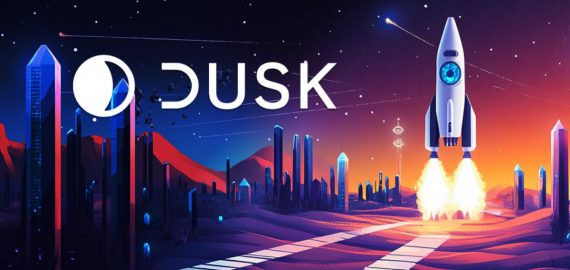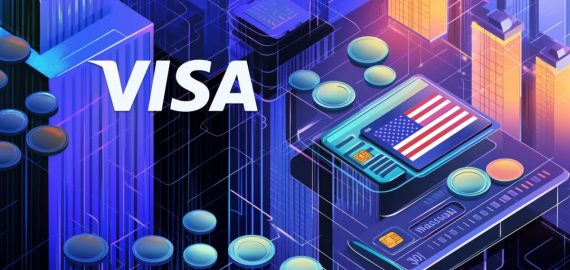How Tokenization Turns Africa into the Future of Finance


In Brief
Ubuntu Tribe CEO Mamadou Kwidjim Toure discusses the reshaping of global finance by gold ownership by the milligram, highlighting the adoption of blockchain and mobile-first infrastructure.

Gold can now be owned by the milligram, and that single innovation is rewriting the rules of global finance. In this interview, Mamadou Kwidjim Toure, CEO of Ubuntu Tribe, explains how tokenization is transforming everything from cross-border settlements to agricultural financing, with emerging markets like Africa leading the charge. He shares why traditional institutions are finally embracing blockchain, how mobile-first infrastructure bypasses outdated banking systems, and why gold has become the blueprint for the next wave of asset tokenization worldwide.
What has changed in the last few years to make traditional financial institutions embrace tokenisation after years of hesitation?
The collapse of FTX ironically accelerated institutional adoption by forcing the industry to mature. We’ve seen tokenized treasuries grow from zero to over $5 billion, proof-of-reserve becoming standard after FTX, and regulatory frameworks like MiCA providing clear operational guidelines.
Most importantly, operational costs have dropped by up to 90% in some asset management functions while settlement times went from T+2 days to near-instant.
Which regulatory milestones have given banks and asset managers more confidence in blockchain-based financial products?
MiCA in Europe created the first comprehensive framework banks could actually build on, with actionable rules fully in force since December 2024. Singapore’s Payment Services Act showed how to balance regulatory certainty with innovation since 2020.
The UAE’s VARA framework helped attract over $30 billion in crypto investments by 2024. These operational models give banks clear guidelines on what they can do, how to do it, and what protections they have.
How is tokenisation addressing the operational inefficiencies of traditional settlement systems?
Traditional settlement is a $20 billion annual cost that adds zero value—just middlemen verifying other middlemen. Tokenization eliminates entire layers of this infrastructure. A cross-border gold trade that took 5 days with multiple intermediaries now settles in hours with cryptographic proof.
We’ve moved from batch processing to real-time reconciliation, and enabled 24/7 settlement as standard.Ubuntu Tribe sources gold from Latin America, Africa, with a destination for vaults in Europe, Dubai & Singapore. With complete transparency in timeframes, traditional systems can’t match.
What specific asset classes are proving to be the “gateway” for TradFi institutions entering blockchain?
Government bonds and money market funds serve as training wheels with low risk, high volume, and immediate cost savings. BlackRock’s tokenized treasury fund hit $500 million faster than any traditional ETF.
But the real gateway is gold and commodities because they solve actual problems: fractional ownership, instant settlement, and proof of reserves. Physical assets make blockchain benefits tangible. When a bank can verify gold reserves in real-time instead of quarterly audits, the technology sells itself.
Why are emerging markets, especially in Africa, more open to adopting tokenised asset platforms compared to developed markets?
Africa doesn’t have legacy systems to protect. When 360 million people lack bank accounts but have mobile phones, tokenization becomes the only solution that makes sense.
We processed $1.1 trillion in mobile money last year while Western banks still debate digital transformation. Our currencies lose 30% annually, so tokenized gold is critical for protecting savings.
How does mobile-first infrastructure allow these regions to bypass traditional banking bottlenecks?
Mobile money already trained an entire continent to trust digital value. The same phone handling daily transactions can now hold tokenized assets with no new behavior to learn, no branches to build.
A small business owner in Accra can own gold tokens with the same ease they send mobile money. We’re creating an alternative to banks, not an addition to them. The infrastructure investment already happened through telcos, now we’re simply adding better financial products to existing rails.
What types of assets are most in demand in tokenised form in African markets?
Gold leads demand, followed closely by agricultural commodities where farmers tokenize cocoa, coffee, and grain harvests to access working capital months before harvest. Real estate tokens are growing rapidly in cities where property ownership was previously out of reach for most workers.
We’re also seeing demand for tokenized infrastructure bonds and even livestock certificates. All these assets can be fractionalized for small investors. A good example of this is how GIFT Gold’s 10-cent entry point created an entry for mass adoption.
How do these platforms handle challenges like unstable local currencies or limited access to USD liquidity?
We bypass currency instability entirely by pricing tokenized assets in stable units: gold by weight, commodities by global market rates, real estate by square meters. Smart contracts handle any necessary conversion at the moment of transaction, not during storage.
For USD liquidity, platforms create pools backed by real assets rather than relying on traditional forex markets. When someone in Ghana trades tokenized gold for goods in Kenya, both parties avoid exposure to volatile local currencies. The tokenized asset itself serves as the stable medium of exchange.
How are local regulations adapting to accommodate tokenised financial products in mobile ecosystems?
African regulators are surprisingly progressive because they see tokenization solving real problems. Kenya’s Capital Markets Authority approved tokenized securities in 2022. Nigeria created specific digital asset regulations. Ghana’s new Gold Board integrates blockchain tracking.
The regulatory focus is on consumer protection and anti-smuggling, not protecting incumbent banks that barely serve the population anyway.
How is the tokenisation of gold under MiCA creating a “gold standard” for compliance in digital assets?
MiCA’s approach to gold tokenization became the template because it solved the hardest problem: proving physical backing. Real-time proof of reserves, segregated custody, regular audits have become minimum requirements for any tokenized real asset.
When regulators see gold tokenization working under MiCA’s strict framework, they gain confidence to approve other assets. We’ve implemented these standards at Ubuntu Tribe globally, not just in Europe.
What lessons from gold tokenisation will shape the next wave of asset tokenisation globally?
Proof of reserves has become non-negotiable since FTX showed that promises mean nothing without verification. Real-time transparency accessible to anyone is now the baseline requirement.
When gold can be owned by the milligram, every asset becomes available to everyday investors. Infrastructure must prioritize mobile accessibility and operate independently from traditional banking. These principles from gold tokenization are already spreading to real estate, commodities, and securities.
The blueprint is set for democratizing wealth creation across all asset classes.
Disclaimer
In line with the Trust Project guidelines, please note that the information provided on this page is not intended to be and should not be interpreted as legal, tax, investment, financial, or any other form of advice. It is important to only invest what you can afford to lose and to seek independent financial advice if you have any doubts. For further information, we suggest referring to the terms and conditions as well as the help and support pages provided by the issuer or advertiser. MetaversePost is committed to accurate, unbiased reporting, but market conditions are subject to change without notice.
About The Author
Victoria is a writer on a variety of technology topics including Web3.0, AI and cryptocurrencies. Her extensive experience allows her to write insightful articles for the wider audience.
More articles

Victoria is a writer on a variety of technology topics including Web3.0, AI and cryptocurrencies. Her extensive experience allows her to write insightful articles for the wider audience.

















































